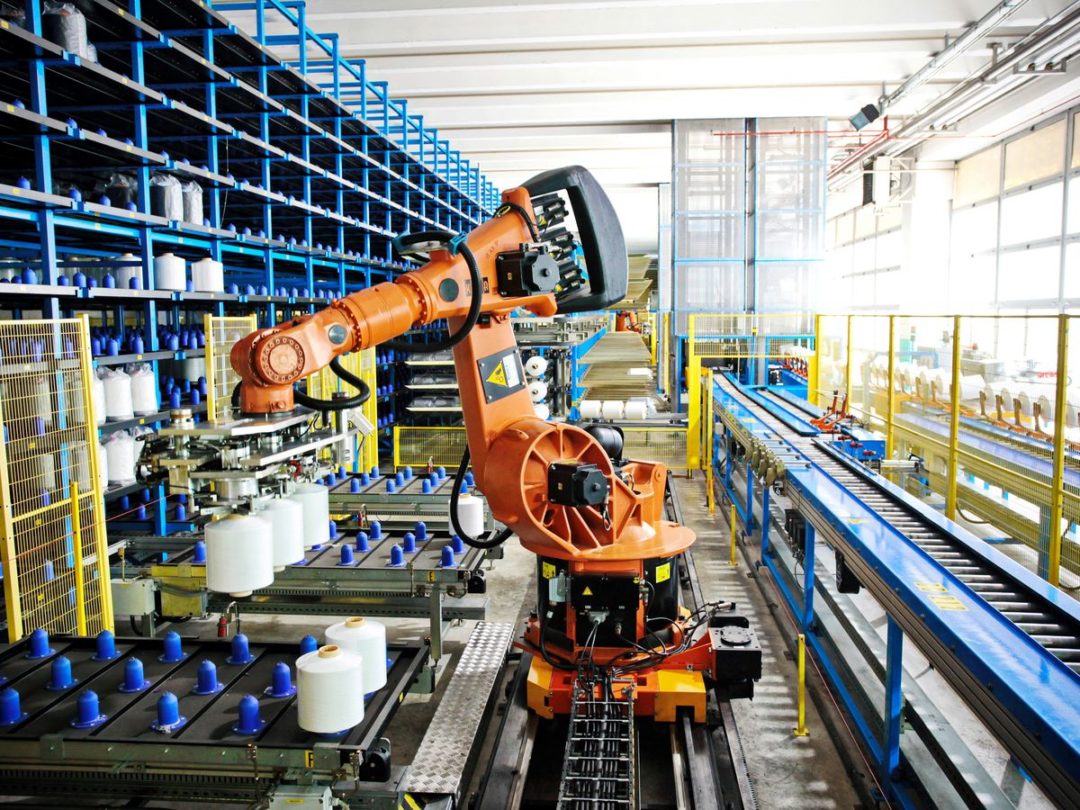
According to research published by Interact Analysis, the number of warehouses is expected to increase by 30% from the current 163,000 worldwide to 214,000 in the next six years. And by 2027, around 25% of all warehousing space will be dedicated to online fulfillment centers, a nod to the continued growth of e-commerce.
In Research and Markets’ recent report on warehouse automation trends and technology, the most significant takeaway is that just one-fifth of today’s distribution centers have some form of automation. And in most of those cases, just having a conveyor belt met the definition of “some form of automation,” while only 5% overall had incorporated advanced automation technology into their operations.
The same logistics industry report forecasts that the warehouse automation industry overall is forecasted to grow at a 10% compounded annual rate through 2030. That represents an estimated $20 billion investment in the area of automation technology alone.
It’s no secret why. Logistics industry wages and costs continue to increase, while all trends point to a continued shortage of workers to fill thousands of job openings. Whereas at one time it was practical to staff up for peak periods, the tightening of the labor supply takes this off of the table as a feasible, cost-effective option. It’s clear that the industry can no longer “throw people at the problem.”
In the recent past, implementing automation within a warehousing and distribution environment might have depended on the customer having or creating an engineering department in order to oversee selection, implementation and maintenance. The process might have taken up to 18 months to get underway.
In the last three years, however, we've seen tremendous growth in autonomous mobile robot (AMR) technology, which the vast majority of today’s warehouses can afford, understand and quickly integrate into their operations. AMRs have added value in a huge variety of applications, including in e-commerce and micro-fulfillment operations, supplementing existing sites, providing store replenishment functions, and sortation in large or small distribution centers. Compared to more expensive fixed automation technologies, AMR represents a low-cost entry point to warehouse automation, in terms of project cycle time, human resources and capital expenditure.
Leading AMRs today offer a portable, modular, automated system for items and parcels, facilitating inbound sortation to aisle segments, outbound e-commerce and buy online, pick up in-store (BOPIS) commerce. Such systems automate order consolidation and can also sort parcels to local post offices, making possible same-day handling of orders at the lowest possible cost.
The robots are typically guided by radio frequency identification (RFID), which allows their movements to be tracked throughout the building. They’re battery-operated and programmed for “opportunity charging,” where they automatically connect to a charging station when low on power and aren’t focused on a mission-critical task. This type of technology is flexible enough to work in everything from small or large warehouses to retail store back rooms.
From an operational point of view, warehouses using radio frequency or voice-picking technology are typically prepared to integrate AMR. Such systems have a short project cycle time, with installation startup to go-live typically in less than half the time associated with other stationary automated solutions. And the systems can scale up or down very quickly for throughput flexibility during peak seasons.
The efficiency and cost savings of the technology are clear. Leading AMRs typically require only 25%-50% of the floor space of a traditional sortation or order-fulfillment system, since multiple robots are able to operate in proximity to each other. Adding AMRs requires less labor and can automate typically manual operations such as the exit side of sortation activities.
In a medium-sized warehouse where the average hourly rate might be $30 an hour factoring in the cost of benefits, AMRs might be able to do the work of five employees, saving an estimated $300,000 a year.
Beyond these inherent advantages, the recent advent of robotics as a service (RaaS) is lowering the barrier of entry to automation as never before. In addition to typical system sales or leasing options, companies now have the option to pay a monthly subscription fee based on a usage model, without an up-front capital cost.
The RaaS model is proving especially attractive to retailers that are anticipating peak seasons. It can scale up and down rapidly in response to changing market conditions or seasonal demand such as the holiday season, back to school, January returns, and other seasonal events.
RaaS frees up capital for companies to accelerate automation of their retail and warehouse operations and achieve an early return on investment, while not getting locked into long-term service-level agreements. A full package of services can include consulting, implementation, maintenance, systems and robotics upgrading.
RaaS can help bridge the automation gap for many small to mid-size enterprises. The model conserves capital, converts investment to an operating cost, and allows customers to “pay as they go” for use of the system.
Sean O’Farrell is vice president of operations for Tompkins Robotics.







